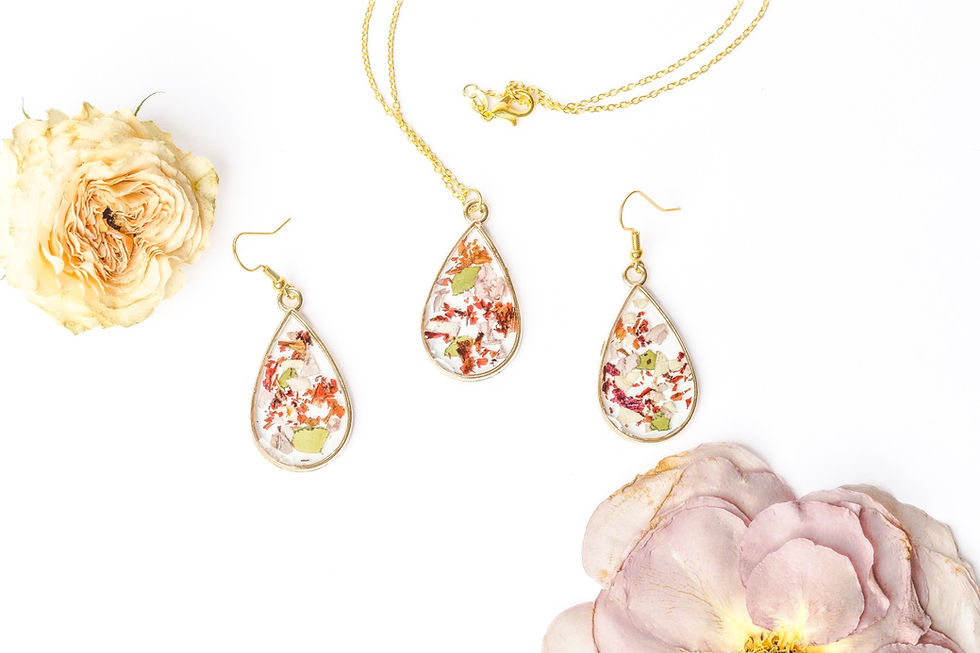DIY Your Wedding Flowers: A Step-by-Step Guide to Beautiful Blooms on a Budget
- Bouquet Casting Co

- Mar 16, 2023
- 4 min read
Wedding flowers have a unique way of make the big day memorable, and the right floral arrangements can elevate the beauty and sentiment. Professional florists can be costly, so many couples choose to DIY their wedding flowers. Not only is it budget-friendly, but it also allows you to add a personal touch to your celebration.
In this guide, we'll walk you through the process of DIY-ing your wedding flowers, from selecting the perfect blooms to crafting stunning arrangements that leave a lasting impression.

1. Set a Budget and Establish a Floral Vision
Before you start, determine how much you're willing to spend on flowers. Setting a budget will help you make informed decisions about the types and quantities of flowers you'll need.
Next, establish your floral vision. Consider your wedding theme, colors, and personal preferences. Create a mood board with images of flowers and arrangements that inspire you. This will serve as a reference when you're shopping for flowers and crafting your arrangements.

2. Choose Your Flowers
Once you have a vision, it's time to choose the flowers. Keep seasonality in mind, as in-season blooms will be more affordable and easier to source. Some popular wedding flowers include roses, peonies, hydrangeas, lilies, and tulips. Don't forget about filler flowers, like baby's breath, eucalyptus, and ferns, which add texture and volume to your arrangements.
When selecting flowers, consider their colors, sizes, and shapes. This will help you create cohesive arrangements that complement your wedding theme. Additionally, think about the fragrance of the flowers. Some blooms have strong scents that can be overpowering, so choose a balance of scented and unscented flowers.
3. Source Your Flowers

There are several options for sourcing flowers, including local flower markets, wholesale suppliers, and online retailers. Research each option to find the best prices and selection. If you're on a tight budget, consider using local, in-season blooms, as they'll likely be more affordable.
Order your flowers well in advance of your wedding day to ensure availability. Keep in mind that flowers should arrive a few days before your wedding to allow time for arranging and for the blooms to open.
4. Gather Your Tools and Supplies
You'll need a few essential tools and supplies to create your wedding flower arrangements:
Floral scissors or shears
Floral tape
Floral wire
Vases or containers
Ribbon or twine
Water and flower food
Floral foam (for certain types of arrangements)
5. Prepare Your Flowers
Once your flowers arrive, you'll need to prepare them for arranging. First, remove any packaging, and give the stems a fresh cut at a 45-degree angle. This will help the flowers absorb water more effectively. Remove any leaves or thorns that will be below the waterline in your arrangement, as they can promote bacterial growth.
Place the flowers in clean water mixed with flower food, following the package instructions. Allow the flowers to hydrate for a few hours or overnight before arranging.

6. Create Your Bouquets and Arrangements
Now it's time to start creating your arrangements! Use your mood board as a guide, and be prepared to experiment with different combinations of flowers.
For bouquets:
Start by selecting a focal flower, and build around it by adding other flowers and filler greens.
Hold the bouquet in one hand while adding flowers with the other.
Once you're happy with the arrangement, secure the stems with floral tape.
Trim the stems to your desired length, and wrap the stems with ribbon or twine to finish the bouquet. You can add decorative pins or a brooch for a touch of elegance.
For centerpieces:
Choose a vase or container that complements your wedding theme.
If using floral foam, soak it in water mixed with flower food, then place it in the container.
Start by adding greenery to create a base for your arrangement.
Add your focal flowers, followed by secondary flowers and filler flowers, creating a balanced and pleasing composition.
Be mindful of the size and shape of the arrangement, ensuring it doesn't obstruct guests' view or conversation.
For boutonnieres and corsages:
Select a small focal flower and a few complementary accents, like greenery or smaller blooms.
Trim the stems to about 1.5 inches.
Attach the flowers and accents together using floral tape, and wrap the stems with ribbon or twine to finish.

7. Store Your Arrangements Properly
To keep your flowers looking fresh, store them in a cool, dark place until the wedding day. Avoid direct sunlight, heat, or drafts, which can cause flowers to wilt. Check the water levels in your vases or containers daily, and refresh the water if needed. For bouquets, store them in water to keep the stems hydrated.
8. Set Up Your Flowers on the Wedding Day

On the wedding day, have a plan for transporting and setting up your flowers. Enlist the help of family or friends to ensure a smooth process. For bouquets and boutonnieres, keep them in water or a refrigerator until it's time for photos or the ceremony. For centerpieces, place them on tables and double-check their stability. Lastly, have extra flowers and supplies on hand for any last-minute touch-ups or replacements.
DIY-ing your wedding flowers can be a rewarding experience that adds a personal touch to your special day. With careful planning, a clear vision, and some creativity, you can create stunning floral arrangements that will leave a lasting impression on you and your guests. Remember to enjoy the process, and don't be afraid to ask for help when needed. Your beautiful, handcrafted blooms will be a testament to your love and commitment, and a cherished memory for years to come.





Comments